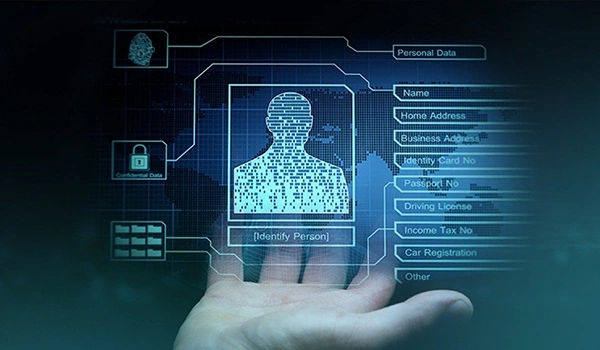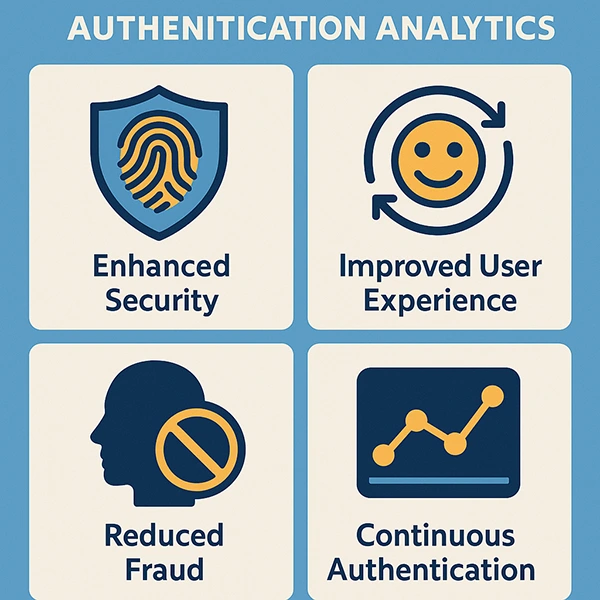
KEY TAKEAWAYS
- Digital identity systems must evolve to protect billions of global users.
- Decentralized and self-sovereign identities give users more data control.
- Biometrics and behavior-based AI enhance secure, low-friction authentication.
- Interoperability across systems is key to future-ready identity management.
- Ethical, user-centric design ensures trust and inclusivity in identity systems.
In 2025, statistically speaking, there are estimated to be approximately 5.56 billion global internet users, with no apparent slowing of growth in digital users.
As we think about Future of Digital Identity Management in a Connected World, we are thinking bigger than emerging technology. We are thinking about trust, safety, and innovation relating to identity management to include personal safety and safety and integrity from organizations due to hyper-connectedness or over-connection.
This article will explore what Digital identity management looks like today, what it wants to solve in the society of today, and how the technologies that enable the management of digital identity are changing and evolving.
At its core, digital identity management involves processes and technologies that organize and protect data on users, devices, and applications. It encompasses identity verification, authentication, authorization, and lifecycle management.
As cloud computing, the Internet of Things (IoT), and AI become ubiquitous, identity and access management must adapt to be inclusive, flexible, and secure enough to handle millions of interlinked identities interacting in real time. As cloud computing, the Internet of Things (IoT), and AI become ubiquitous, your identity and access management framework must adapt to be inclusive, flexible, and secure enough to handle millions of interlinked identities interacting in real time.
Today’s digital identity systems are grappling with multiple challenges:
Users often manage multiple identities across various platforms, each requiring its own credentials and verification processes. This fragmentation creates inefficiency and insecurity, raising the chances of password reuse, identity theft, and data breaches.
With growing scrutiny over how personal data is collected and used, DIM must comply with regulations like GDPR and CCPA. However, transparency is still an issue. Users seek more control over their data, yet many systems continue functioning like opaque black boxes.
Enterprise identity management has become more complicated, especially with hybrid teams using resources from multiple locations and devices. Controlling access and permissions without harming productivity needs advanced tools and governance. Despite these challenges, advances in technology offer unprecedented opportunities to reimagine digital identity management for the better.
Here are a few trends that are reshaping digital identity:
One of the most promising developments is the rise of decentralized identity models. DID and SSI empower users to control their identities directly, without relying on centralized authorities like governments or corporations. Powered by blockchain and distributed ledgers, these systems allow secure identity checks using cryptographic proofs, reducing data exposure.
For instance, rather than showing your full passport or driver’s license to confirm age, you could provide a cryptographically signed proof that you’re over 18, revealing nothing more. This paradigm shift supports privacy, reduces fraud, and places control firmly in the hands of the individual.
Biometric identifiers, such as face scans, fingerprints, and voice recognition, are already utilized for authentication. As AI and machine learning improve, behavioral analytics (such as keystroke dynamics, navigation patterns, and device usage) are joining the fold to create multi-layered authentication systems.
Upcoming DIM solutions will probably integrate biometrics with behavioral data for passive user authentication, improving security and minimizing friction. Below, you can see the benefits of authentication analytics.

Artificial intelligence is critical in monitoring and detecting anomalous behavior. AI-powered adaptive identity management platforms continuously evaluate risk, detect unusual behavior, and initiate immediate actions like re-authentication or temporary access suspension.
This dynamic approach moves beyond static role-based access control to risk-based access control (RBAC), where decisions adapt based on context, user behavior, and evolving threat intelligence.
For digital identity management to succeed in a connected world, systems must be able to talk to one another. Global groups such as the World Wide Web Consortium (W3C), Decentralized Identity Foundation (DIF), and OpenID Foundation are driving open standards for cross-platform and cross-border identity portability.
By adhering to shared protocols, organizations can reduce vendor lock-in, improve user experience, and accelerate trust across networks.
With growing awareness of privacy and security risks, users will increasingly demand transparent, user-focused identity solutions. Individuals will gravitate toward platforms that offer:
DIM tools that contain clear interfaces, educational resources, and robust customer activity will stand out.
For businesses, digital identity management is not just a security tool but a key driver of business growth. A well-implemented DIM strategy can:
Forward-thinking companies are investing in customer identity and access management (CIAM) platforms that boast advanced features like account proofing, social login integration, and highly customized experiences.
Governments play a dual role in shaping the future of digital identity: as regulators and as providers of foundational ID systems. As countries develop digital ID initiatives (such as India’s Aadhaar or the EU’s eIDAS), they need to balance inclusion, security, and individual rights.
Partnerships between the public and private sectors will play a vital role in creating trusted, inclusive identity systems.
As cyber threats grow in scale and sophistication, organizations are shifting toward Zero-Trust architectures. In this model, neither users nor devices are trusted by default, even within the network boundary. Identity replaces the traditional perimeter.
DIM solutions must integrate with Zero Trust strategies, enabling continuous verification, micro-segmentation, and least-privilege access. Within this framework, strong identity governance, real-time analytics, and unified policy enforcement become essential.
PRO TIP : Prioritize user control and interoperability in your digital identity strategy to boost trust, flexibility, and long-term success.
Though technological advances are thrilling, the ethical considerations of digital identity management must not be ignored. Who owns your data? How is it used, and by whom? What happens when identity systems exclude the most vulnerable?
Ethical considerations must be integrated by developers, policymakers, and companies when designing and implementing DIM solutions.
This includes:
To prepare for the future of digital identity management, stakeholders should:
Digital identity management is undergoing a seismic transformation. As our lives grow more connected and interactions increasingly digital, strong, ethical, and interoperable identity systems are vital.
The future of DIM will be shaped not only by technological advancements but also by societal choices about privacy, equity, and trust. Through cross-sector and cross-border collaboration, we can create a digital identity infrastructure that empowers people, fosters innovation, and protects the digital future for generations.
Building this new infrastructure requires foundational tools that can handle the complexity of global digital interactions. A robust identity verification platform is a critical component, ensuring that businesses can accurately and securely confirm a user’s identity to prevent fraud and maintain trust.
Decentralized and self-sovereign identities place users in direct control of their personal data, preventing reliance on an authority (or authorities), improving privacy and significantly lowering the chances of fraud.
Artificial intelligence, including biometric factors and behavior/protocol analytics, allow for the creation of multiple levels and ways to authenticate identity, which can be passive, but also secure while limiting the friction suffered by the user when logging in.
Interoperability allows multiple identity platforms to work together and share data with each other in a safe and secure manner. It also reduces the impact of vendor lock-in and creates seamless experiences for users when they move across jurisdictions and platforms or devices.
